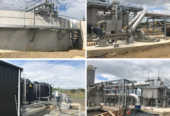Water safety agencies are calling on people to take care on the Waikato River this summer, particularly around dams and lakes in the Waipā and South Waikato districts.

Lake Karapiro
Water Safety New Zealand statistics showed 287 drownings had been recorded in the Waikato region since 1980, the highest figure nationally.
That makes up 20 per cent of the 1398 people who have died while swimming in the New Zealand’s rivers and inland waterways during the past 44 years.
There were 90 preventable drownings in New Zealand in 2023, 15 of those were recorded in the Waikato region.
Water Safety New Zealand chief executive Daniel Gerrard said more can be done to help communities learn how to stay safe in our rivers and lakes this summer.
“Many drownings happen in water that seems calm – people are often unaware of strong currents, submerged objects, and sudden drop offs. They often involve rescuers becoming the victim.
“No one needs to lose their life on the water this summer – be aware of hidden dangers and help each other to stay safe while having fun.”

Deb Hann
Police Community Liaison Officer Deb Hann said it’s a good time to remind people to be safe around the water, as the summer season approaches.
“As the weather warms up, many of us flock to our lakes and rivers but it’s also when people can get into trouble.
“Whether swimming or boating, we want everyone to come home to their whānau after a day in or on the water. We encourage people to swim in appropriate places, to supervise children around the water and to remember that alcohol and water don’t mix.
“There are lots of water safety resources and advice out there, so take a moment to brush-up on water safety basics before you dive in.”
Waipā and South Waikato districts are home to hydro dams at Karāpiro, Arapuni and Waipapa. The lakes near the dams are popular places for people to visit during the summer holidays.

Swimming in safety on Lake Karapiro
Mercury’s Head of Operations for Generation, Matt Kedian, wanted to raise awareness of the Hydro Dam safety zones.
“The safety zones are areas which are 200m above and below dam structures, where all vessels are prohibited, as well as swimming, jumping and fishing.
“These are dangerous areas and it’s important to respect the water and understand the risks.”
Waikato Regional Harbourmaster Chris Bredenbeck agreed and said the water near dams has strong currents and suction effects.
“Water levels and flows can change quickly, and massive flows may be released at any time from hydro dams. Please do not swim in these areas.
“It is wonderful to have the lakes and rivers in our communities to enjoy but we also want to make sure everyone is safe in the water.”

Karāpiro Hydro Station. Photo: Stephen Wells.








